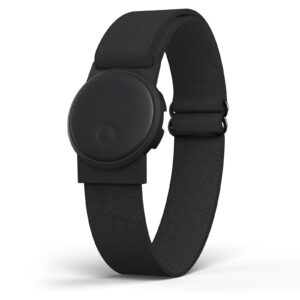bio.calm
Reducing stress one heart at a time.

Our biofeedback software is mobile, science-backed, and utilizes a variety of learning methods.
Chronic stress can lead to psychological and physical conditions, including disease, addiction and mental disorders
Heart disease is the leading cause of death in the U.S.
49 out of every 100 teens struggle with mental health issues
Mental skills (psychological skills) are tools for the mind. Just like putting a fitness program together to train the body to be healthy, fit, flexible, and strong; we can do the same for your brain. Positive psychology teaches us that training the mind is like learning a new skill, such as playing the guitar or ice skating: we need to keep practicing and have the right coaching and support until we become competent and gain mastery.
Neuroscience, the scientific study of the nervous system and brain, shows our brains are malleable and can grow, learn, and develop throughout our lives if provided with the right nutrients and stimulation even when under continuous, high levels of pressure.
— Andrew May, Mental Skills and Leadership Coach
Our smart heart rate visualization app helps you understand and manage your body’s stress response in real time. By displaying your heartbeat on your iPhone or our crystal light platform with a color-coded scale, you can instantly see when your heart rate is in balance or elevated, empowering you to build self-regulation skills and achieve calm. Our app teaches you how to use your body and your senses to optimize your heart rate and rewire your stress response system. Unlike traditional heart monitors, our unique color-based display provides a soothing, intuitive, and visually engaging experience.
—InstructorKnapp, Founder bio.calm
“Successful regulation of emotional states is positively associated with mental health, while difficulties in regulating emotions are negatively associated with overall mental health and in particular associated with anxiety or depression symptoms. A key structure associated with socio-emotional regulatory processes is the central autonomic network, the parasympathetic [rest and digest] and the sympathetic [fight, flight, freeze] stress response.
We use the parasympathetic system like a brake. It should be our default. As soon as we lose that [default setting] we see patients in our clinic with a very high resting heart rate. If we get them to reduce their resting heart rate, to put on the brakes, they feel more power, they feel more relaxed because the parasympathetic system is more active again and they have more capacity for cognition in their daily lives.”
—Dr. Marc Jarczok is an international expert in heart rate and using it to positively impact wellbeing and performance.
One way to lower your heart rate is to intermittently raise it. But when you do that you are also increasing the parasympathetic system, or the vagal system, the recovery system. That’s where all the goodness is when you enhance the vagal system, you are now creating capacity, increasing your resilience both emotionally and physically.
— Dr Tom Buckley specializes in the impact of stress on cardiovascular health and coaches high performers to optimize their physical and psychological state capacity.
“Breathing is incredible because it represents the interface between conscious and subconscious control. How you breathe influences your brain/body state.”
— Andrew Huberman, Ph.D., is a neuroscientist and tenured professor in the department of neurobiology, and by courtesy, psychiatry and behavioral sciences at Stanford School of Medicine.





